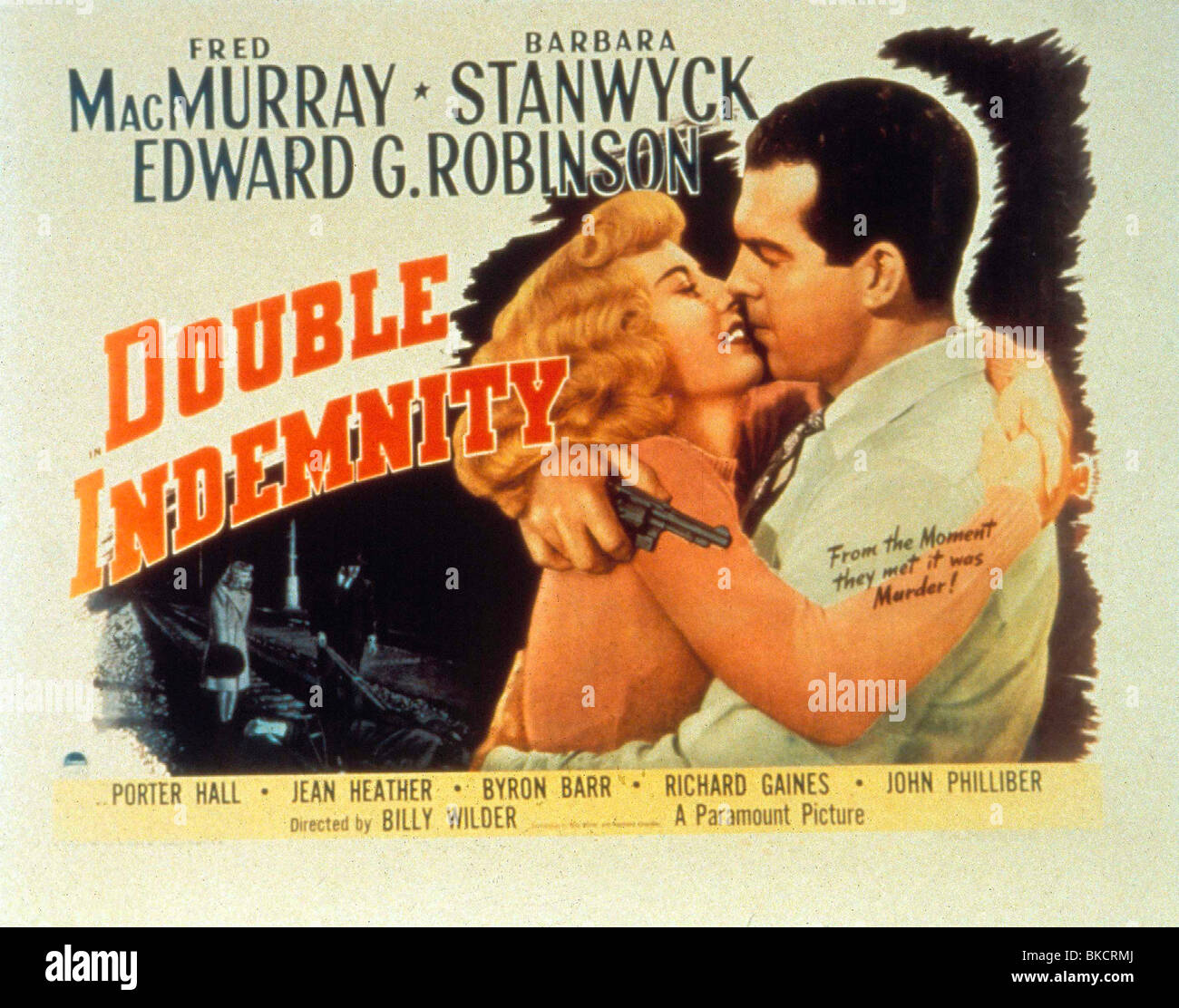Hello and welcome dear friends and cinema lovers.
Today I will talk about the 1944 Noir film Double Indemnity directed by celebrated Billy Wilder. The film was adapted from the novel of the same name by James M. Cain.
GENRE: FILM NOIR
With its sharp
dialogue, moody cinematography by John Seitz, and a haunting score by Miklós
Rózsa, Double Indemnity set the standard for film noir. It’s a gripping story
of moral decay, where no one truly wins. A must-watch classic that still
resonates today.
WHY SHOULD WE WATCH IT?
The film, Double Indemnity, is a must-watch for its pivotal role in defining film noir and its enduring storytelling brilliance.
- It’s a cornerstone of the noir genre, blending crime, moral ambiguity, and psychological tension. Its dark, cynical tone and shadowy aesthetics set a template for countless films to come. Unlike typical 1940s films, it doesn’t moralize. The characters’ flaws and choices drive the tragedy, offering a complex view of human nature that was daring for its time.
- Based on James M. Cain’s novella, the tight narrative, told in flashback, keeps you hooked with its twists and moral decay. The use of a confessional flashback, narrated by a doomed protagonist, was groundbreaking. Neff’s voiceover, dictating his crimes to Keyes, adds a layer of fatalistic intimacy. The detailed depiction of insurance scams, inspired by a real 1927 case, adds a unique layer of realism. Keyes’ actuarial obsession with spotting fraud is a standout subplot.
- Nominated for seven Oscars, it’s a masterclass in 1940s Hollywood storytelling, reflecting post-Depression anxieties and wartime cynicism. Its influence persists in modern thrillers like “Body Heat” or “Gone Girl.”
- Stanwyck’s chilling yet seductive Phyllis and MacMurray’s everyman-turned-villain Neff deliver iconic performances, grounded by Edward G. Robinson’s dogged investigator Barton Keyes. Phyllis Dietrichson is one of cinema’s definitive femme fatales—calculating, alluring, and ruthless. Stanwyck’s performance, complete with her iconic anklet and blonde wig, elevates the character into a cultural icon.
- Wilder’s direction, combined with sharp dialogue (co-written with Raymond Chandler) and John Seitz’s cinematography, creates a gripping, stylish experience that holds up even today. The scriptcrackles with witty, hard-boiled exchanges. Lines like “I killed him for money and a woman—and I didn’t get the money, and I didn’t get the woman” are unforgettable. The film’s low-key lighting, venetian blind shadows, and claustrophobic framing create a noir aesthetic that’s both stylish and oppressive, reflecting the characters’ entrapment. The dynamic between Neff, Phyllis, and Keyes crackles with subtext—romantic, adversarial, and fraternal. The “father-son” bond between Neff and Keyes adds emotional depth to the betrayal.
- Made under the strict Hays Code, the film cleverly navigates restrictions on sex and violence through innuendo and suggestion, making its boldness even more impressive.
- Modern Blu-ray releases (like the Criterion Collection) showcase the film’s crisp black-and-white visuals and clear sound, enhancing its appeal for new viewers.
- Its themes of greed, betrayal, and consequence transcend its era, resonating with anyone who enjoys psychological thrillers or character-driven dramas.
If you love taut storytelling, complex characters, or the roots of noir, Double Indemnity is essential viewing. Its exclusive blend of narrative innovation, iconic performances, and visual mastery makes it a timeless classic. I give this film 8 out of 10 stars. You can watch the film on Amazon Prime Video.
That is all for today. Stay tuned for more meh-FILM.
Thank you

Comments
Post a Comment